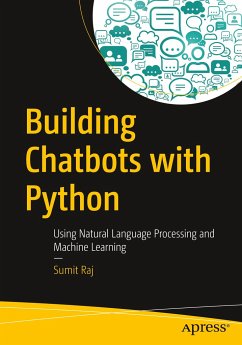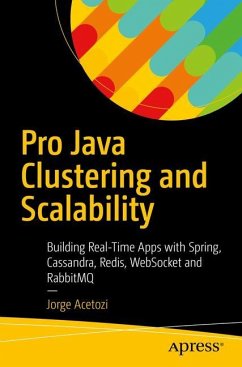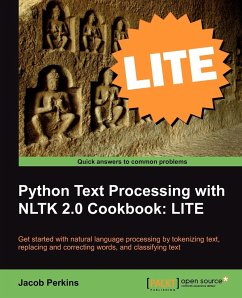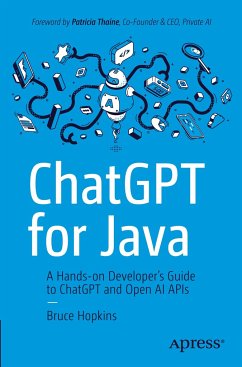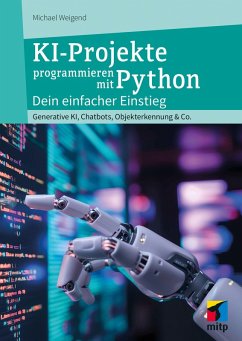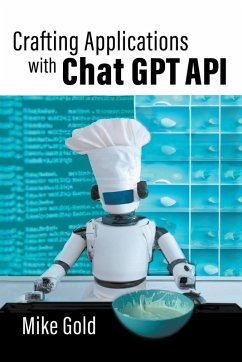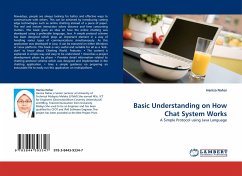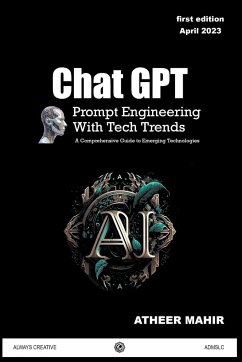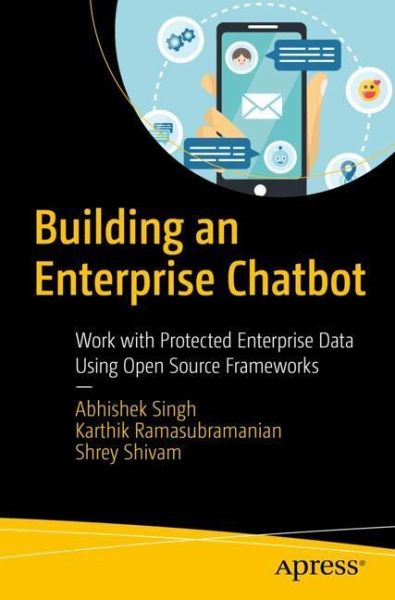
Building an Enterprise Chatbot
Work with Protected Enterprise Data Using Open Source Frameworks

PAYBACK Punkte
21 °P sammeln!
Explore the adoption of chatbots in business by focusing on the design, deployment, and continuous improvement of chatbots in a business, with a single use-case from the banking and insurance sector. This book starts by identifying the business processes in the banking and insurance industry. This involves data collection from sources such as conversations from customer service centers, online chats, emails, and other NLP sources. You'll then design the solution architecture of the chatbot. Once the architecture is framed, the author goes on to explain natural language understanding (NLU), nat...
Explore the adoption of chatbots in business by focusing on the design, deployment, and continuous improvement of chatbots in a business, with a single use-case from the banking and insurance sector. This book starts by identifying the business processes in the banking and insurance industry. This involves data collection from sources such as conversations from customer service centers, online chats, emails, and other NLP sources. You'll then design the solution architecture of the chatbot. Once the architecture is framed, the author goes on to explain natural language understanding (NLU), natural language processing (NLP), and natural language generation (NLG) with examples.
In the next sections, you'll design and implement the backend framework of a typical chatbot from scratch. You will also explore some popular open-source chatbot frameworks such as Dialogflow and LUIS. The authors then explain how you can integrate various third-party services and enterprise databases with the custom chatbot framework. In the final section, you'll discuss how to deploy the custom chatbot framework on the AWS cloud.
By the end of Building an Enterprise Chatbot, you will be able to design and develop an enterprise-ready conversational chatbot using an open source development platform to serve the end user.
What You Will LearnIdentify business processes where chatbots could be usedFocus on building a chatbot for one industry and one use-case rather than building a ubiquitous and generic chatbot Design the solution architecture for a chatbotIntegrate chatbots with internal data sources using APIsDiscover the differences between natural language understanding (NLU), natural language processing (NLP), and natural language generation (NLG) Work with deployment and continuous improvement through representational learning
Who This Book Is ForData scientists and enterprise architects who are currently looking to deploy chatbot solutions to their business.
In the next sections, you'll design and implement the backend framework of a typical chatbot from scratch. You will also explore some popular open-source chatbot frameworks such as Dialogflow and LUIS. The authors then explain how you can integrate various third-party services and enterprise databases with the custom chatbot framework. In the final section, you'll discuss how to deploy the custom chatbot framework on the AWS cloud.
By the end of Building an Enterprise Chatbot, you will be able to design and develop an enterprise-ready conversational chatbot using an open source development platform to serve the end user.
What You Will LearnIdentify business processes where chatbots could be usedFocus on building a chatbot for one industry and one use-case rather than building a ubiquitous and generic chatbot Design the solution architecture for a chatbotIntegrate chatbots with internal data sources using APIsDiscover the differences between natural language understanding (NLU), natural language processing (NLP), and natural language generation (NLG) Work with deployment and continuous improvement through representational learning
Who This Book Is ForData scientists and enterprise architects who are currently looking to deploy chatbot solutions to their business.




